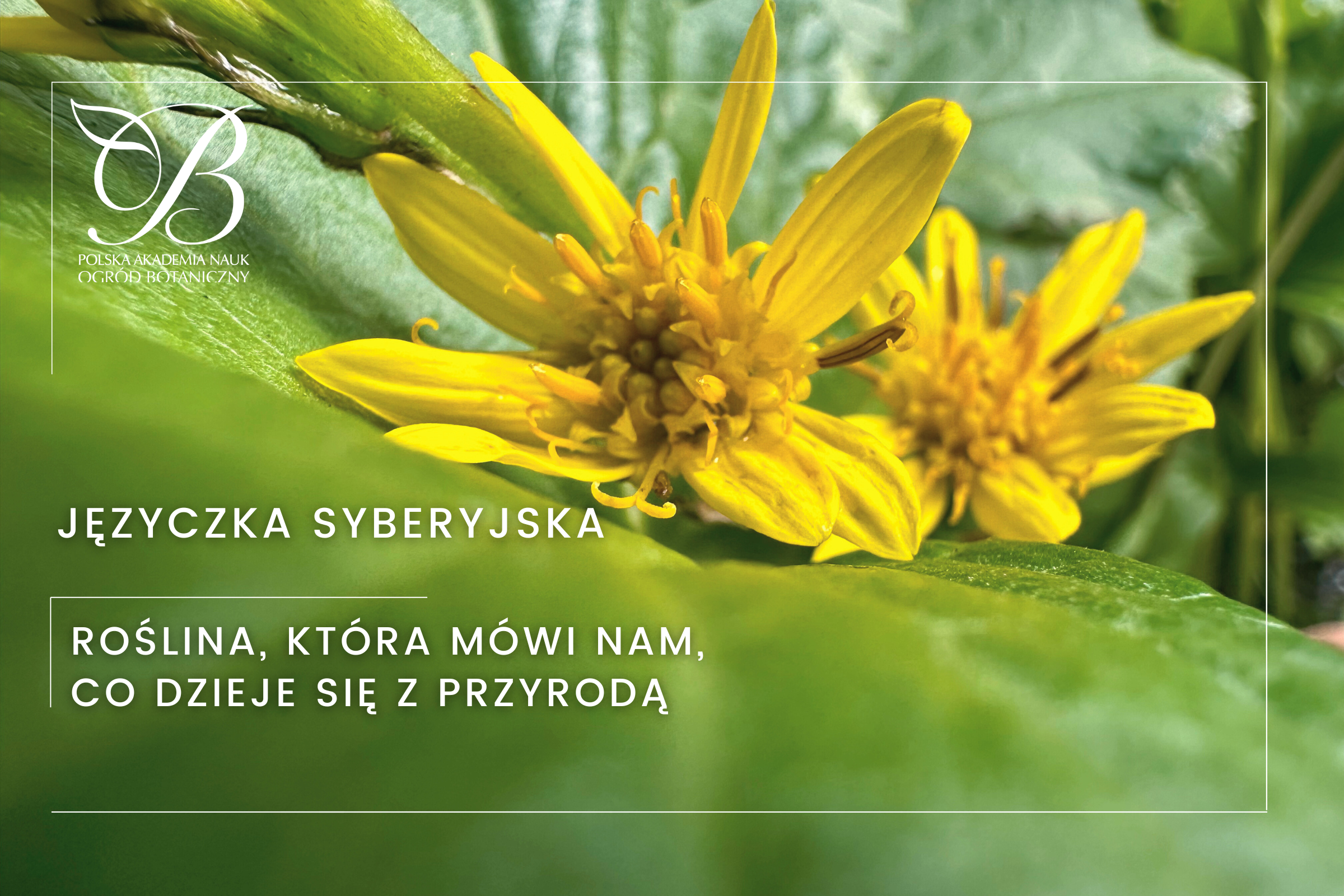A unique experiment is being conducted at the Botanical Garden of the Polish Academy of Sciences by Dr. Anna Rucińska on the pollination of Siberian uvula (Ligularia sibirica), a plant of great natural and scientific importance. This inconspicuous species can tell a lot about the state of ecosystems in which the hydrological factor plays a key role, especially peatlands, and is therefore becoming the subject of intensive research and conservation efforts.
Dust observation: step one
Siberian lingonilla is an insect-pollinating plant, so research began by observing the natural pollination process Its intense yellow flowers attract pollinating insects (buzzards, bumblebees, bees, flies), which are most active on sunny, dry days....
From a research perspective, it is interesting to observe the behavior of the insect during pollination, we observe both the mouth apparatus and the abdomen, as its mossy jet is important in the transfer of pollen from flower to flower.
The goal of these observations is to replicate the pollination process under controlled conditions, which will allow crossbreeding experiments to be carried out using a brush to transfer pollen.
Structure of the flower and importance of pollen
Siberian tongue belongs to the aster family (Asteraceae) and its flowers are gathered in characteristic baskets. On the periphery are tongue-like flowers, which can be fertile or contain pistils, and inside are hermaphroditic tubular flowers. It is along the tubular flowers that the brush moves, simulating the movements of insects, to transfer pollen between individuals.
Crossbreeding experiment: population health
The experiment used individuals from two different populations. The plants were derived from seeds collected for the Seed Bank at the Botanical Garden, and then kept under identical conditions (same growth chamber, substrate, pots, light). From the stage of appearance of the first leaves proper in the seedlings, differences were noticed: one population showed better condition, had larger leaves and more showy flowers.
It was therefore decided to carry out crossbreeding between individuals of the two populations to see if the resulting seeds would produce offspring with better condition, suitable for further restoration work. For control purposes, groups were also formed with individuals pollinated only within one population.
Indicator plant
Siberian lingcod can be regarded as a kind of bioindicator, or indicator organism. Its presence at a site means that hydrological conditions are suitable. If the tongue plants persist after the reintroduction, this indicates the success of the conservation measures usually associated with the entire habitat.
These measures aim to link real conservation effects to specific natural indicators. Given the specificity of peatland habitats and their importance for water retention, lingcod can support the assessment of the effectiveness of these processes.
The importance of genetics and the inbreeding effect
As spatially isolated populations decrease in size, the risk of "inbreeding" - The inbreeding effect. Subsequent generations may become genetically weaker and weaker, even if the environment is optimal. However, genetic studies conducted at the Botanical Garden have shown that the genetic condition of most populations in Poland is good , which allows restoration work to continue.
Seed bank and conservation efforts
The Seed Bank contains material from all national populations, collected over two decades. It also contains genotypes from populations that have almost disappeared in the wild. This genetic resource is an opportunity to bring out the next generation of plants that can provide starting material for strengthening populations.
Cooperation with Regional Environmental Directorates and NGOs allows to combine knowledge and practice. The overarching goal is to maintain disappearing populations of the Siberian linguine in natural sites.
The future of the species depends on us
Despite being little known, the Siberian lingcod carries great significance. It is associated with peatland ecosystems, which play a key role in regulating water resources and climate. It can be said that its presence or absence is a signal about the state of nature. Thanks to the research conducted at the Botanical Garden of the Polish Academy of Sciences, we have a chance not only to learn more about this species, but also to save it from extinction, and thus contribute to the protection of our native nature.


